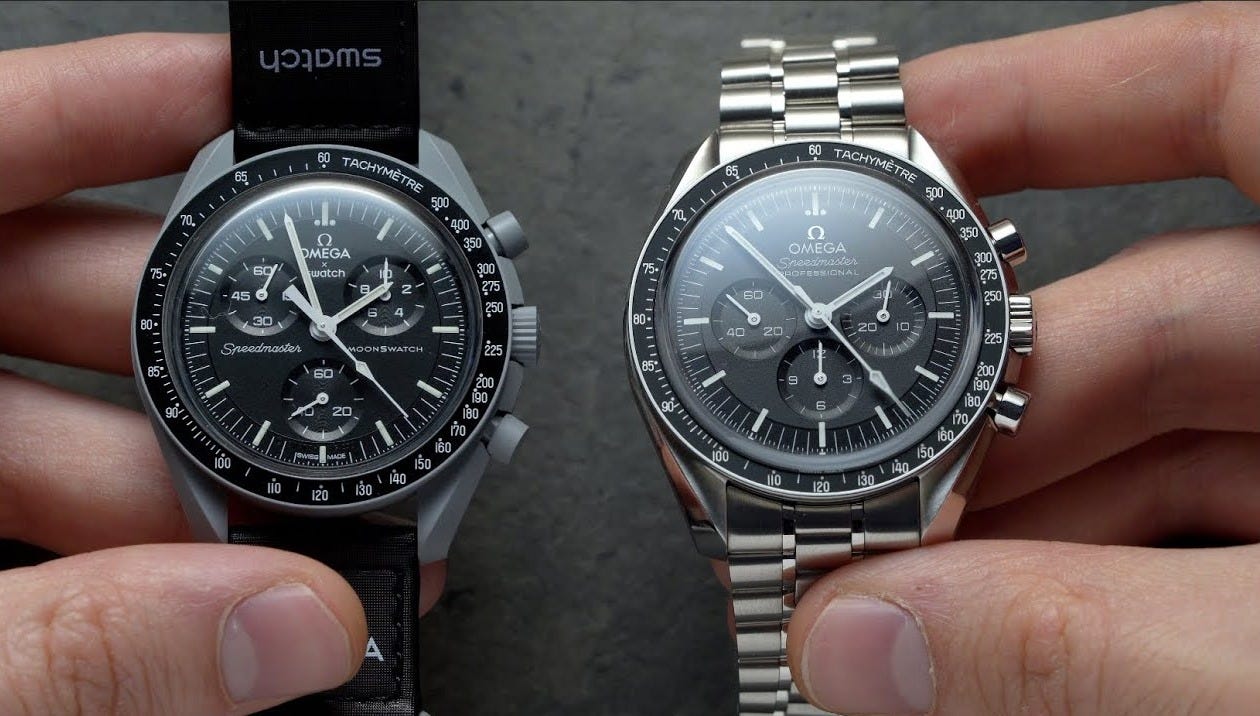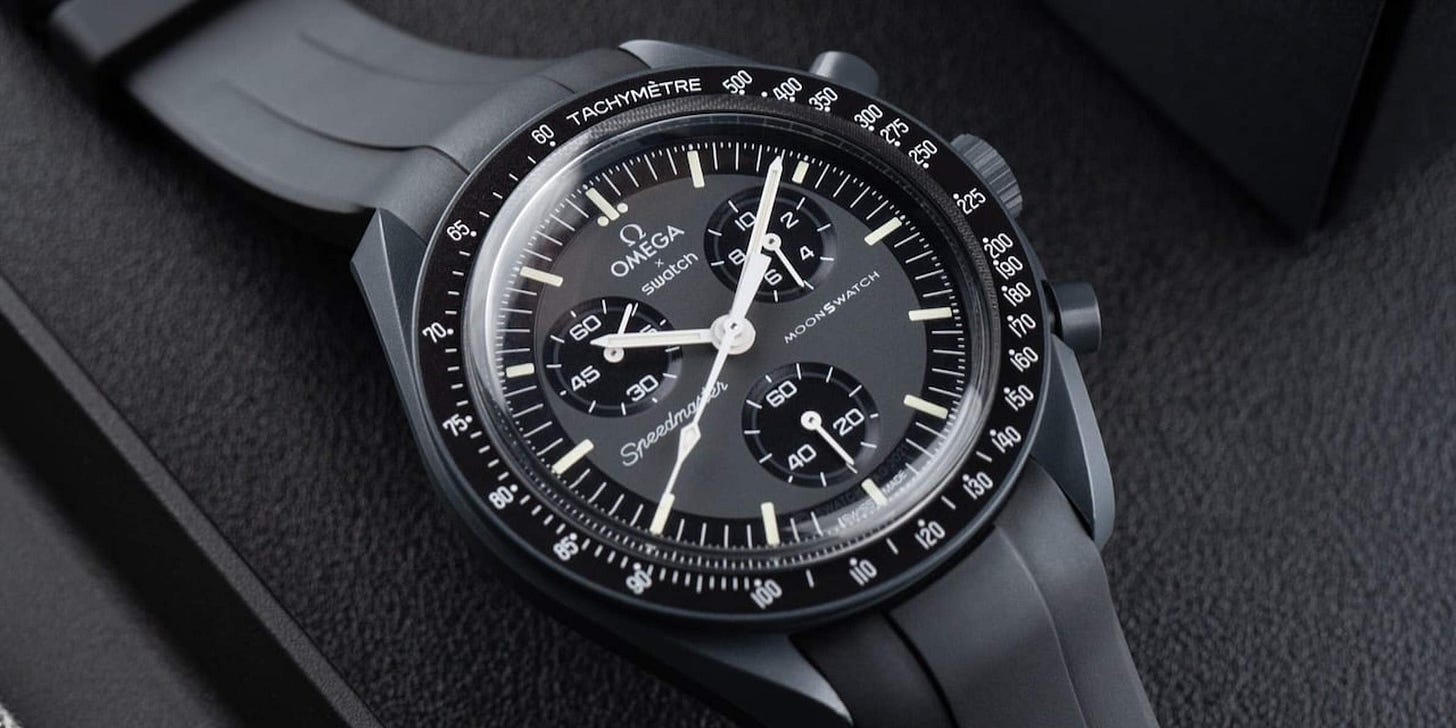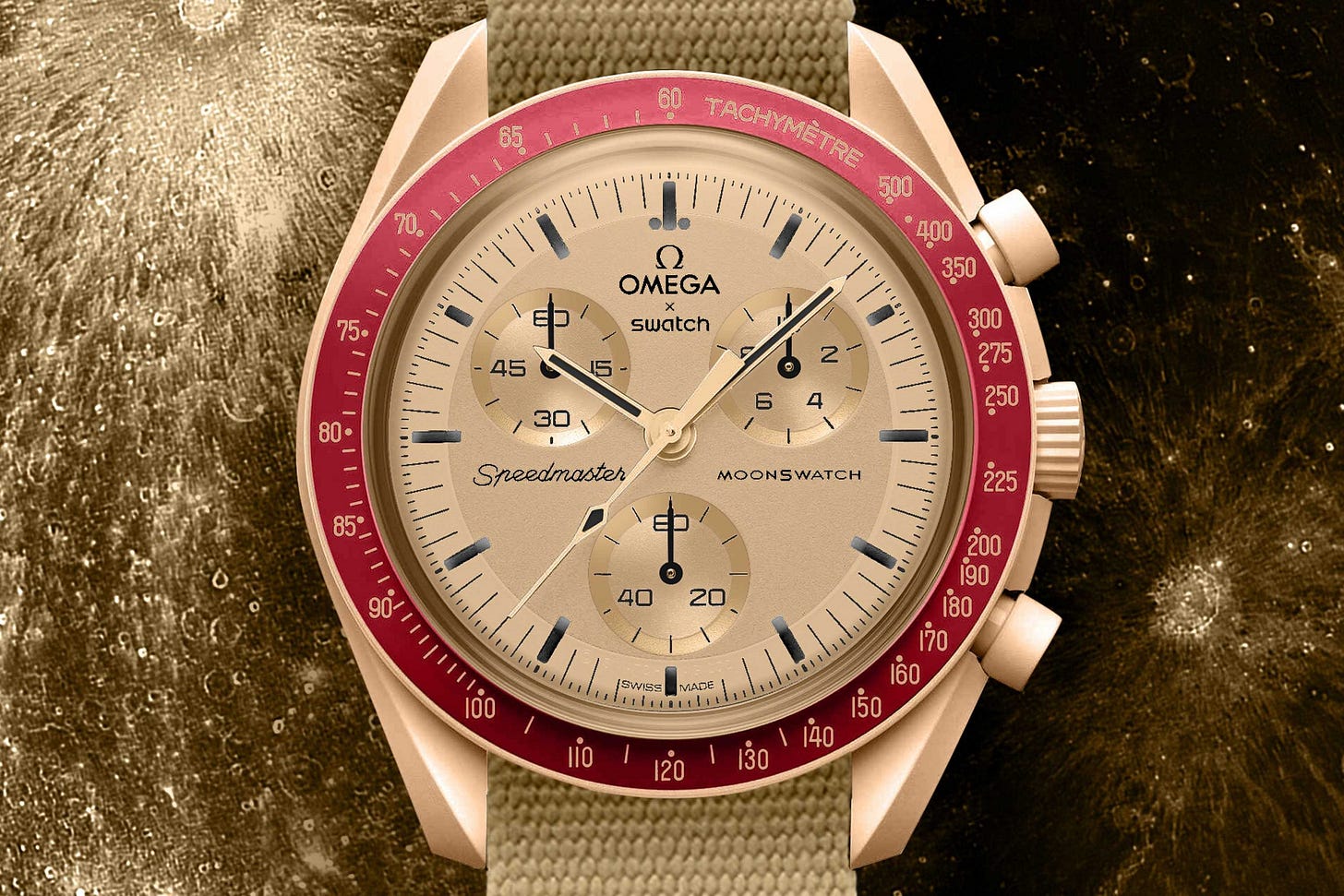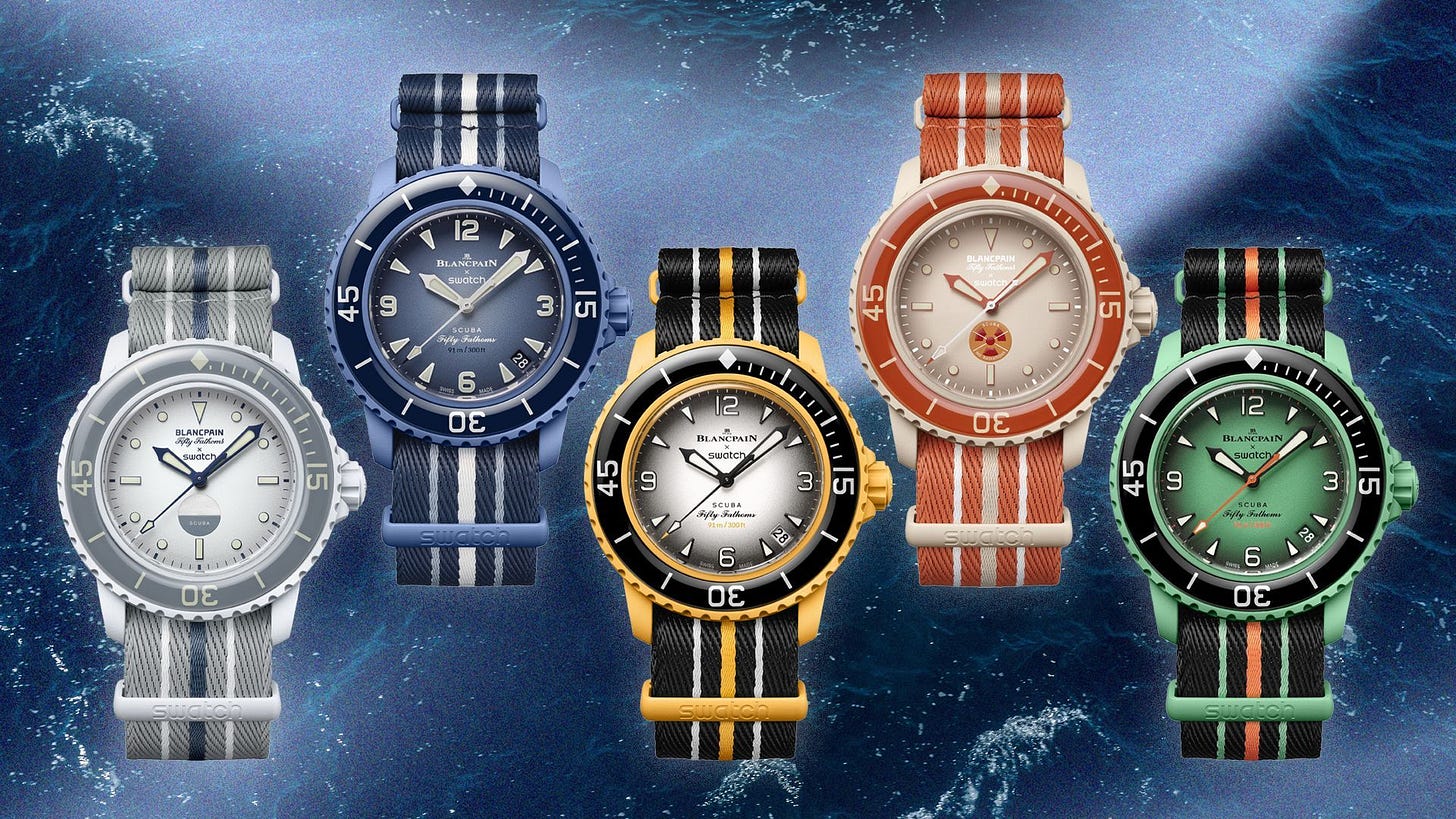The $260 Watch That Broke the Internet
How Swatch and Omega turned a plastic Speedmaster into a global phenomenon — and changed the watch world forever.
It’s not often that a plastic watch causes riots.
But on March 26th, 2022, Swatch and Omega did the unthinkable: they released a $260 version of the legendary Speedmaster — made from bioceramic and branded boldly as the “MoonSwatch.”
What followed was pure chaos.
Lines wrapped around blocks. Police were called in cities like London, Tokyo, and New York. Resale prices soared. Social media exploded.
It was the kind of cultural moment usually reserved for sneaker drops or new iPhones — not Swiss quartz watches.
But the MoonSwatch wasn’t just a gimmick. It was a spark that reignited Swatch as a brand, made Omega part of the mainstream conversation again, and pulled thousands of new collectors into the world of horology.
Let’s dive into how a plastic, battery-powered watch became one of the most talked-about timepieces in modern history.
A Moonwatch for the Masses
To understand the hype, you first need to understand the Speedmaster Moonwatch — the model that inspired the MoonSwatch.
The Omega Speedmaster is legendary. It was the first watch worn on the moon, strapped to the wrists of NASA astronauts during the Apollo missions. It’s rugged, reliable, and has one of the best origin stories in watch history.
But it’s not cheap. The current Moonwatch retails for over $7,000 — a serious investment.
So when Omega and Swatch announced a playful, affordable homage to the Speedy, the world took notice.
There were 11 models at launch, each themed around a celestial body: Mission to the Moon, Mission to Mars, Mission to Neptune, and so on. Each one featured its own color scheme, playful naming, and subtle design nods to the original Moonwatch.
But the kicker? They weren’t sold online.
Only select Swatch boutiques had them, and in very limited quantities.
That decision turned the release into a frenzy.
Pandemonium
The MoonSwatch drop wasn’t just popular — it was pandemonium.
People camped outside stores overnight. Police had to be called in multiple cities due to crowd control issues. In some places, customers were even injured trying to get inside.
Swatch wasn’t prepared. Boutiques had minimal stock — sometimes just 100–200 pieces total. Demand dwarfed supply.
And resale prices? Insane.
Just days after launch, MoonSwatches were selling on eBay for $800–$1,000. Some listings topped $1,500 — more than a used mechanical Speedmaster.
It was a perfect storm of hype:
Affordable price
Iconic design
Scarcity
Zero online availability
Omega branding, Swatch playfulness
And it worked. Beautifully.
The Numbers
Swatch hasn’t released exact sales figures, but estimates suggest that over 1.5 million MoonSwatches have been sold globally since 2022.
Here’s what we do know:
Swatch Group’s revenue jumped 30% YoY in 2022
Profits soared more than 50% — largely thanks to the MoonSwatch
Swatch stores that hadn’t seen lines in years were suddenly swamped
For context, Swatch had been struggling for a while. It hadn’t had a cultural “moment” in over a decade. The MoonSwatch didn’t just revive sales — it revived relevance.
It also brought Omega into conversations outside of luxury watch circles. Suddenly, Gen Z, streetwear fans, and sneakerheads were talking about Speedmasters.
The drop wasn’t just a sales success. It was a brand masterclass.
My Honest Opinion
I’ll be completely transparent here — I bought one.
The “Mission to the Moon” model. The most faithful to the original Speedmaster.
But… I returned it.
The build quality felt cheap. The strap was stiff and plasticky. The case felt toy-like. It just didn’t do it for me. And I already owned a Speedmaster, so the magic wasn’t really there.
But do I regret the experiment? Not at all.
Because what the MoonSwatch represents is bigger than the watch itself.
It pulled thousands of people into this hobby. I’ve spoken to readers and followers who said it was their “gateway drug” into watch collecting — their first step into a much deeper world.
And for that, I love it.
Even if I wouldn’t wear one myself.
MoonSwatch 2.0: Gold Hands and New Drops
Swatch didn’t stop at the original release.
Since then, they’ve rolled out a series of limited editions under the Mission to Moonshine Gold name — identical models, but with a twist:
Gold-colored chronograph hands (to mimic Omega’s Moonshine Gold alloy)
Special packaging
Released only during full moons, in different cities worldwide
They’ve also rereleased models like the Neptune (which was briefly pulled due to a staining issue), updated packaging, and introduced new strap options.
And with each drop, the hype returns — not as crazy as Day 1, but still strong.
People queue. Stores sell out. Resellers flip.
The MoonSwatch has turned into a franchise — and it’s not going away anytime soon.
The Blancpain x Swatch…?
Following the MoonSwatch’s massive success, Swatch tried again — this time teaming up with another sibling in the Swatch Group family: Blancpain.
The result was the Bioceramic Scuba Fifty Fathoms — a colorful, playful take on Blancpain’s legendary dive watch.
But… it didn’t land the same.
While the watches were well-executed and still sold decently, the cultural impact wasn’t close.
Here’s why:
Blancpain isn’t as well-known as Omega
The Fifty Fathoms lacks the moon-mythology of the Speedy
The designs were divisive
The original watch community was still burnt out from MoonSwatch queues
There were no riots. No resale explosion. No media frenzy.
It was a solid release. But it proved the MoonSwatch was lightning in a bottle.







